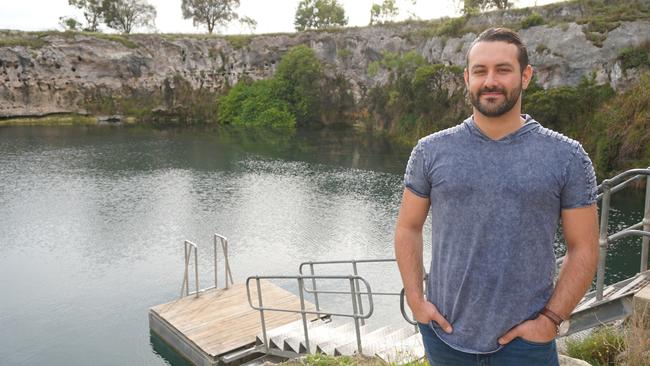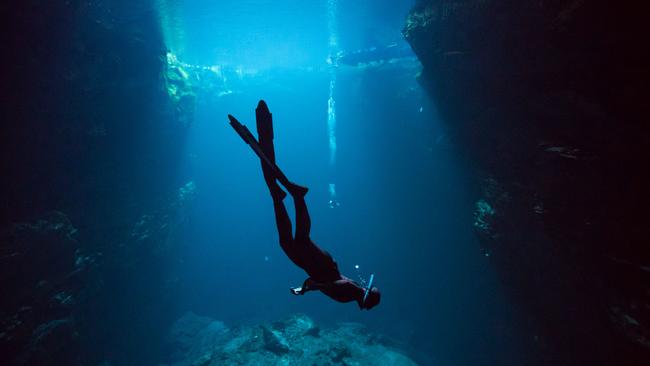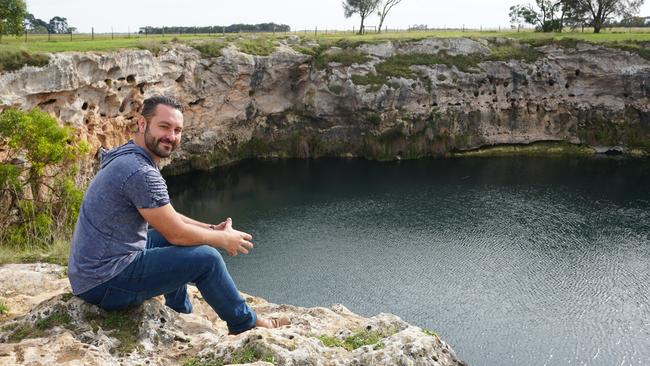Divers call for Mount Gambier sinkholes to be opened to those with international certifications
People will die under a plan to relax cave diving rules to entice international tourism back to Mount Gambier, according to the association born from a spate of fatalities in the 1970s.
Mount Gambier
Don't miss out on the headlines from Mount Gambier. Followed categories will be added to My News.
A plan to make South Australia’s world renowned cave diving sites more accessible would be deadly, according to the Cave Divers Association of Australia (CDAA).
The Australian Cave Explorers (ACE) is pushing to put the Limestone Coast’s network of sinkholes on the tourist map by simplifying access for divers with international certifications.
While ACE president Tim Muscat said more can be done to entice visitors to the region, CDAA standards director Tim Featonby said the current system enabled those trained aboard to experience the natural wonders safely.

A spate of deaths led to the creation of the CDAA in 1973 to regulate the sport and restrict sites to divers who have completed an approved course.
“We have grave concerns that if their standards are lower than ours, there’s an imminent fatality waiting to happen,” Mr Featonby said.
“We’ve got a system in place to get any international cave divers into our caves as best we can.”
Mr Featonby said crossover courses bridge training to Australian standards and were crucial in understanding the conditions, act as a checking mechanism and allow additional training to be provided.
He said while local caves can be more dangerous there had been few fatalities since regulations were introduced.
“They are very dangerous environments,” he said.
“Especially at the advanced level some of ours are quite complex and in places quite silty and dirty and other places quite tight.
“A lot of people get down here and realise how different it is compared to crystal clear, nice warm places in Mexico or Thailand.”
It was not uncommon for divers to fail these courses and Mr Featonby detailed a recent near-miss involving three people who would be granted access under ACE’s plans.

“Two of them failed and one went unconscious and would have died if the instructor wasn’t there,” he said.
“Potentially those fellows that failed (would be) allowed to straight back into that advanced site the very next day even though they weren’t up to speed.”
Mr Muscat said he spent the past decade visiting the region – twice a month – before making the move from Melbourne earlier this year.
He said the requirement of a CDAA membership was a “large deterrent for a lot of people” and expanding access would help the region further tap into a huge tourism opportunity.
“There’s nowhere else in Australia that has around 20 caves so close together,” he said.
“You can go do a course in Mexico with the best diving instructor in the world and if you come here, your certification isn’t recognised until you do a dive with a CDAA instructor.
“There are people who don’t choose to come to Australia to cave dive because it’s so difficult to cross over.”
Mr Muscat, who is suspended from CDAA, said ACE was created 12 months ago by divers fed up with the internal politics but had evolved into a group advocating to make the sport more accessible.
It plans to streamline access to sites, allowing people to dive under internationally recognised certifications and training them under Technical Diving International while also opening up sites to free divers.

“What the Association is trying to do is bring more people into Mount Gambier, get them to cave dive, make it easily accessible for them,” he said.
“We recognise good instructors from overseas so, if you come here and you have a licence to say that you can, then you can.
“We approach landowners to get access to sinkholes so we can allow our members to dive them and also allow our instructors to train in them.
“We’re already seeing the benefits of people coming into our association with overseas certifications and having the ability to do things that they can’t under the other systems.”
The association has already reached agreements with Kilsby Sinkhole and Forestry SA, which has six sites in the region and is working to help reopen Ela Elap to divers.
Mr Muscat said it was now calling for the Department of Environment and Water, which controls access to four sites including Tank Cave, District of Grant Council which includes Little Blue Lake and Allendale East Cave plus Mount Gambier Council which has Engelbrechts Cave, to follow suit.





